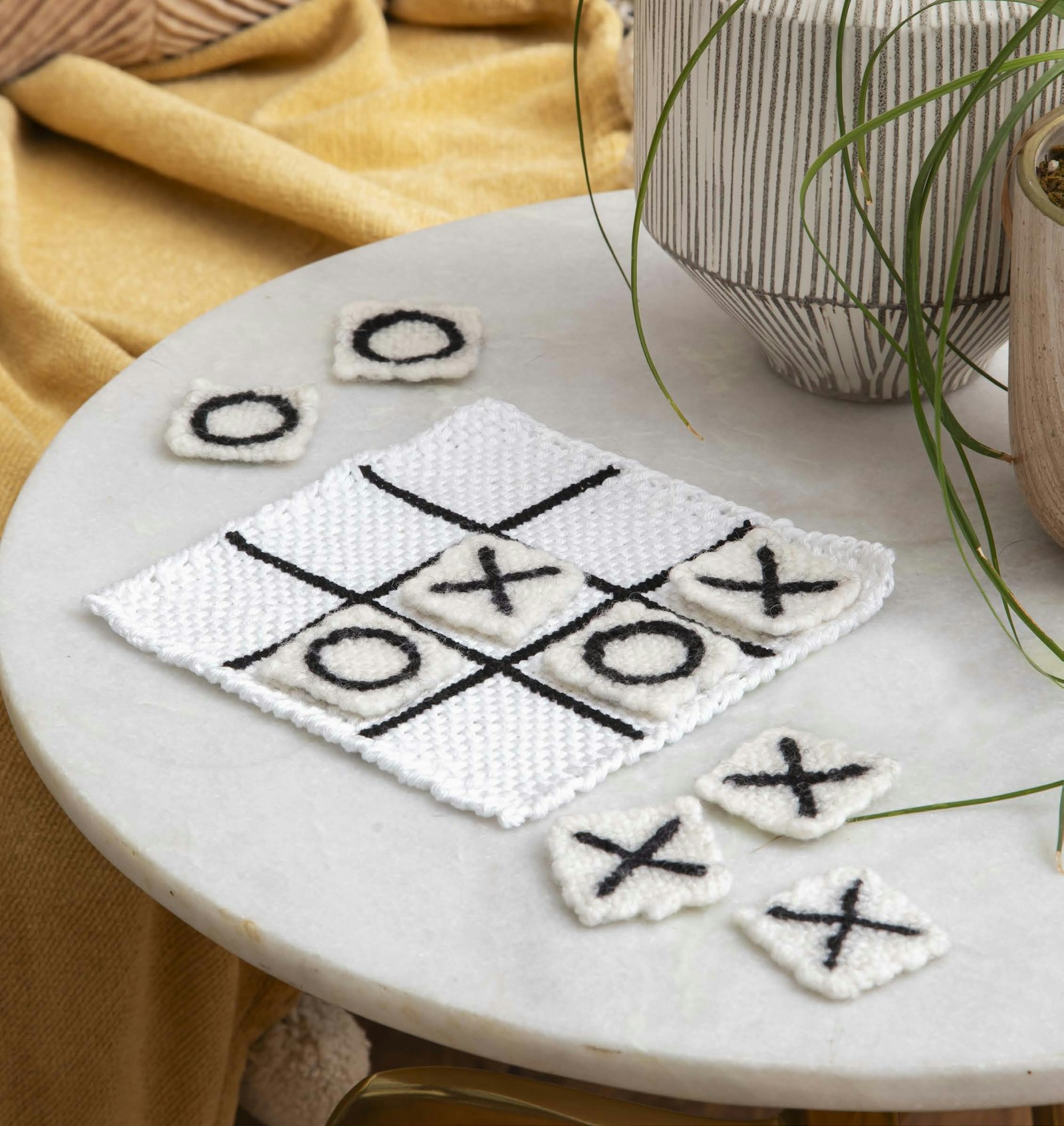As we weave, warp threads bend over and under weft, resulting in fabric shorter than the warp required to make it. Known as take-up, this shortening is familiar to rigid heddle, shaft-loom, and inkle weavers, and it's also why we add extra length to the warp for each woven item. On pin looms, with their fixed frames, take-up shows up as the warp getting tighter and tighter as you weave.
Take-up isn't a problem with small pin looms or stretchy yarns. However, with less elastic yarns and larger looms, take-up can tighten the warp enough to make weaving difficult. Try weaving with cotton or linen yarn on a 6" long pin loom . . . the last few rows are hard to weave!
I've developed a technique for adding a little extra warp length to your pin loom and letting out the extra slack as you work to ease the tension on your loom.
For my technique, you will need a couple of rods a little longer than the weaving width of your loom (I use 7" double-pointed knitting needles). In this example I start with two size 6 (4 mm) needles and switch to a size 4 (3.5 mm) needle.
Warping
Place one of the larger knitting needles along the outside of the pins at the top of the loom. As you wind layer 1, loop the yarn around the knitting needle above the top pins. It does not matter which direction you loop the yarn around the knitting needle. Follow the usual path around the rest of the loom. Be sure to wind with relaxed tension.
 Winding with extra warp length in Layer 1. Photos by Angela K. Schneider
Winding with extra warp length in Layer 1. Photos by Angela K. Schneider
Wind layer 2 as you normally would.
For layer 3, place a second same-size knitting needle along the top pins, next to the first needle. As you wind this layer, loop the yarn around the second knitting needle, similar to layer 1.
 Winding with extra warp length in Layer 3.
Winding with extra warp length in Layer 3.
Weaving
Leave the knitting needles in place as you start weaving layer 4. Weave as you normally would.
Use a packing comb or fork to pack the weft into place. In the beginning while the warp is loose, you can tighten the weaving by leaving the weaving needle in place across the loom and tugging the unwoven warps toward the top of the loom before pulling the needle all the way through.
Once you have woven a third to halfway up layer 4 and the warp is getting snug, it's time to let out more warp. Slide the larger knitting needles out of the loops at the top of the loom and slide the smaller knitting needle into the loops. You can place each set of loops on a separate knitting needle or combine them onto a single knitting needle. Swapping with a smaller needle lets out some of the extra warp length while saving some to let out later.
 The smaller knitting needle in place.
The smaller knitting needle in place.
Continue weaving layer 4 until you reach the last third of the warp or a little further. When the warp is snug again, pull the knitting needle out of the loops and weave to the end of layer 4.
Notes
Try experimenting with different knitting needle sizes; larger needles allow more slack in the warp and vice versa. You may find you even prefer letting out the warp in 3 steps instead of 2. More slack will help with less elastic yarns, thicker yarns, bigger looms, and your own comfort in weaving.
Angela

